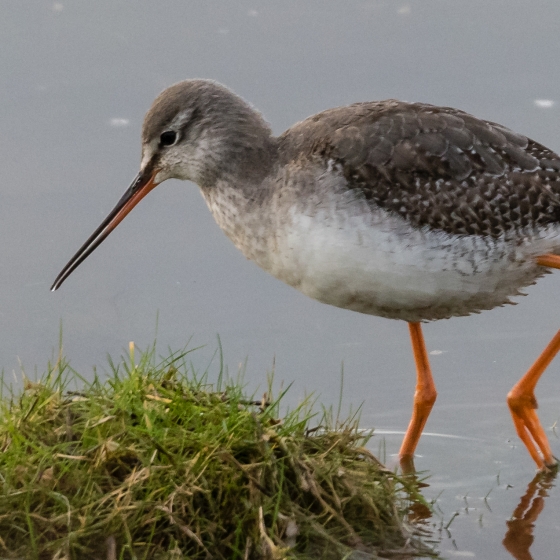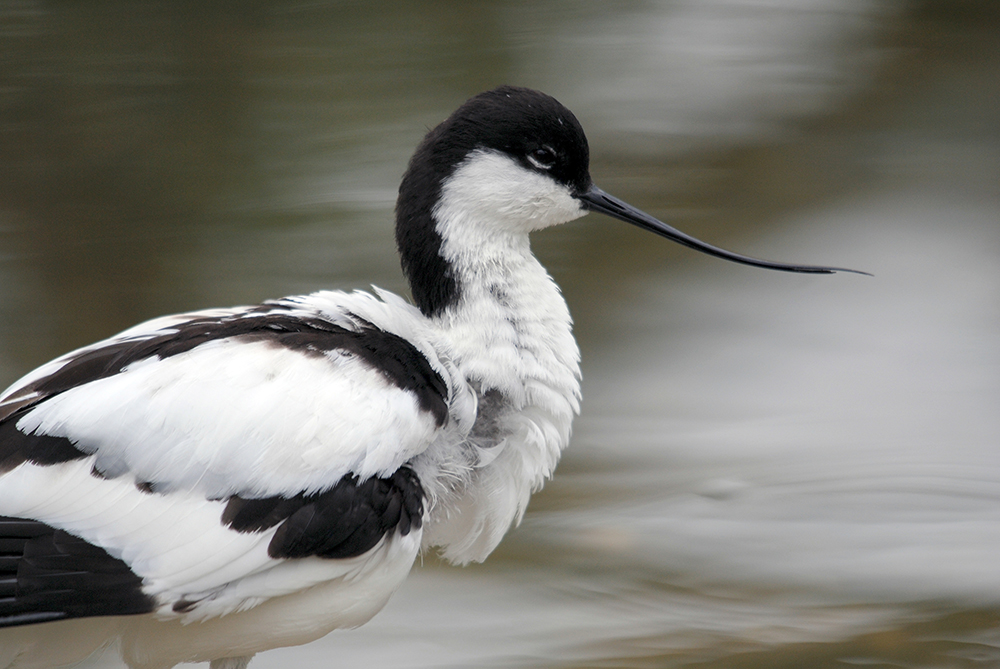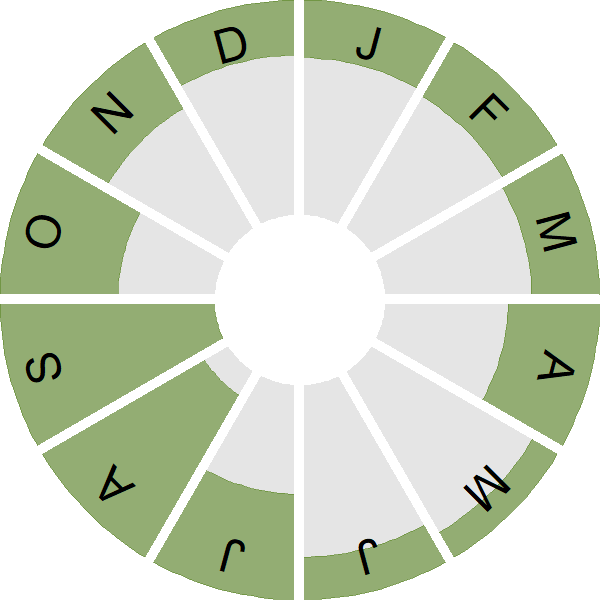Spotted Redshank

Introduction
One of the most elegant waders, with its slim proportions and long needle-like bill, the Spotted Redshank lives up to its name when in its summer plumage, which is dark with white spots.
Spotted Redshank does not breed in Britain and is mainly a passage migrant, seen in both spring and autumn. Unlike the dark summer plumage, autumn and winter individuals are grey above and white below, much paler than their more uniform common cousin, the Redshank.
There is an increasing wintering population in England, with birds distributed mainly around the eastern and southern coasts. The Humber Estuary, The Wash and the Blackwater Estuary in Essex are favoured locations. Spotted Redshanks also winter in small numbers in southern Ireland.

Key Stats
Identification
ID Videos
This section features BTO training videos headlining this species, or featuring it as a potential confusion species.
Common shanks
Songs and Calls
Call:
Status and Trends
Conservation Status
Population Size
Population Change
Spotted Redshank is predominantly a passage migrant in the UK, seen mostly, but not exclusively, in coastal locations Balmer et al. 2013]; a small number of birds also winter here [Frost et al. 2019]. The number of Spotted Redshanks reported via [WeBS peaked in the late 1990s, since when it has declined considerably.
Distribution
Spotted Redshanks are most familiar as a passage migrant. Most winter in equatorial Africa, a small proportion remaining in western Europe, including up to 100 birds in Britain and tens of individuals in Ireland. Most occur around the coast in estuaries, marshes and coastal lagoons.
Occupied 10-km squares in UK
or view it on Bird Atlas Mapstore.
or view it on Bird Atlas Mapstore.
European Distribution Map
Distribution Change
Spotted Redshank range has contracted in Ireland but expanded in Britain. The latter is consistent with a trend for increasing wintering by many waders, most likely linked to climate change.
Change in occupied 10-km squares in the UK
or view it on Bird Atlas Mapstore.
Seasonality
Spotted Redshanks are recorded throughout the year, though most often during early autumn passage. Small numbers winter.
Weekly pattern of occurrence
The graph shows when the species is present in the UK, with taller bars indicating a higher likelihood of encountering the species in appropriate regions and habitats.

Movement
Britain & Ireland movement
Foreign locations of birds ringed or recovered in Britain & Ireland
Dots show the foreign destinations of birds ringed in Britain & Ireland, and the origins of birds ringed overseas that were subsequently recaptured, resighted or found dead in Britain & Ireland. Dot colours indicate the time of year that the species was present at the location.
- Winter (Nov-Feb)
- Spring (Mar-Apr)
- Summer (May-Jul)
- Autumn (Aug-Oct)

European movements
EuroBirdPortal uses birdwatcher's records, such as those logged in BirdTrack to map the flows of birds as they arrive and depart Europe. See maps for this species here.
The Eurasian-African Migration Atlas shows movements of individual birds ringed or recovered in Europe. See maps for this species here.
Biology
Productivity and Nesting
Nesting timing
Egg measurements
Clutch Size
Incubation
Fledging
Survival and Longevity
Survival is shown as the proportion of birds surviving from one year to the next and is derived from bird ringing data. It can also be used to estimate how long birds typically live.
View number ringed each year in the Online Ringing Report.
lifespan
Biometrics
Wing length and body weights are from live birds (source).
Ring Size
Classification, names and codes
Classification and Codes
- Order: Charadriiformes
- Family: Scolopacidae
- Scientific name: Tringa erythropus
- Authority: Pallas, 1764
- BTO 2-letter code: DR
- BTO 5-letter code: SPORE
- Euring code number: 5450
Alternate species names
- Catalan: gamba roja pintada
- Czech: vodouš tmavý
- Danish: Sortklire
- Dutch: Zwarte Ruiter
- Estonian: tumetilder
- Finnish: mustaviklo
- French: Chevalier arlequin
- Gaelic: Gearradh-breac
- German: Dunkler Wasserläufer
- Hungarian: füstös cankó
- Icelandic: Sótstelkur
- Irish: Cosdeargán Breac
- Italian: Totano moro
- Latvian: tumša tilbite
- Lithuanian: tamsusis tilvikas
- Norwegian: Sotsnipe
- Polish: brodziec sniady
- Portuguese: perna-vermelha-bastardo
- Slovak: kalužiak tmavý
- Slovenian: crni martinec
- Spanish: Archibebe oscuro
- Swedish: svartsnäppa
- Welsh: Pibydd Coesgoch Mannog
- English folkname(s): Cambridge Snipe, Spotshank
Research
Publications (2)
Birds of Conservation Concern Wales 4: the population status of birds in Wales
Author: Johnstone, I.G., Hughes, J., Balmer, D.E., Brenchley, A., Facey, R.J., Lindley, P.J., Noble, D.G. & Taylor, R.C.
Published: 2022
The latest review of the conservation status of birds in Wales. The report assessed all 220 bird species which regularly occur in Wales. There are now 60 species of bird on the Red List, with 91 on the Amber List and just 69 - less than a third of the total number of species - on the Green List.
06.12.22
Reports Birds of Conservation Concern

Consequences of population change for local abundance and site occupancy of wintering waterbirds
Author: Méndez, V., Gill, J.A., Alves, J.A., Burton, N.H.K. & Davies, R.G.
Published: 2017
Protected sites for birds are typically designated based on the site’s importance for the species that use it. For example, sites may be selected as Special Protection Areas (under the European Union Directive on the Conservation of Wild Birds) if they support more than 1% of a given national or international population of a species or an assemblage of over 20,000 waterbirds or seabirds. However, through the impacts of changing climates, habitat loss and invasive species, the way species use sites may change. As populations increase, abundance at existing sites may go up or new sites may be colonized. Similarly, as populations decrease, abundance at occupied sites may go down, or some sites may be abandoned. Determining how bird populations are spread across protected sites, and how changes in populations may affect this, is essential to making sure that they remain protected in the future.
20.09.17
Papers


